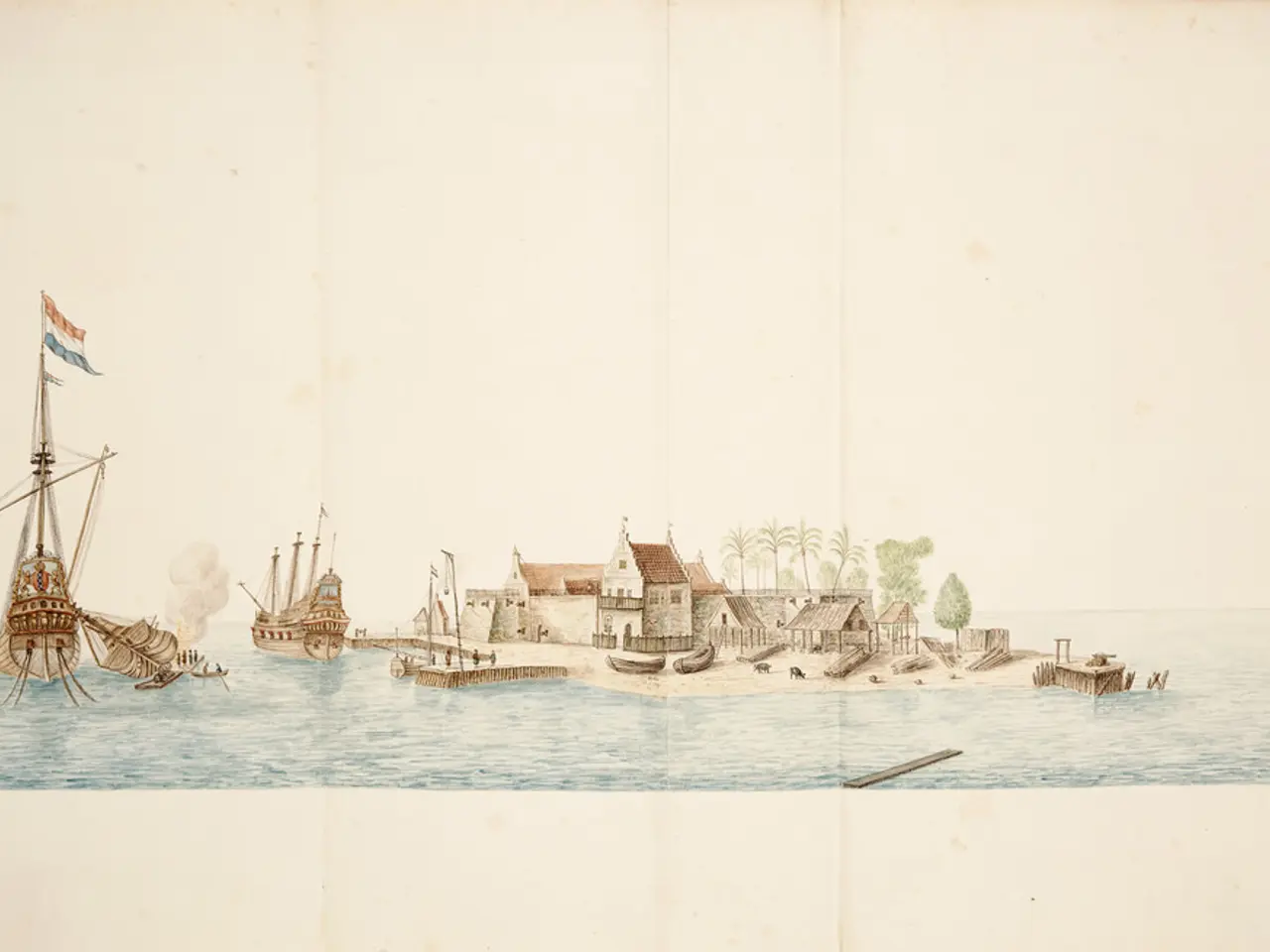Pontoon docks constructed on Kuril Lake within Kamchatka region
Preparations for the 2025 tourist season at the South Kamchatka Federal Nature Reserve, specifically on the shores of Kurilskoye Lake, are now complete. The reserve, known for its breathtaking volcanic landscapes, is gearing up to host visitors from across Russia and abroad, including young researchers participating in a family educational program from nearby settlements.
One of the key improvements this year is the installation of polymer pontoon piers. These durable structures, made from high-density polyethylene (HDPE) or UV-resistant plastics, are specifically engineered to withstand harsh marine environments. Unlike traditional wood, they resist rot, saltwater corrosion, and insect damage, ensuring a much longer service life with minimal degradation over time.
The benefits of these pontoon piers extend beyond durability. Their low maintenance requirement significantly reduces both long-term costs and the environmental impact of frequent maintenance activities, which is especially important in a sensitive ecosystem like the Kurilskoye Lake Nature Reserve.
Polymer materials are often designed to be non-toxic and recyclable. Their resistance to decay means fewer chemicals leach into the water, protecting the lake’s delicate aquatic ecosystem. Furthermore, their longevity reduces the frequency of construction and disposal, minimizing disruption to local wildlife and habitats.
Modular polymer pontoon systems can be easily assembled, disassembled, or reconfigured to suit changing tourism needs. This adaptability is valuable in a nature reserve, where regulations and conservation goals may require adjustments to infrastructure.
Floating polymer pontoons provide a stable, slip-resistant surface that remains above water even in fluctuating lake levels. This enhances safety for visitors, including anglers and those boarding boats, and increases accessibility for people with mobility challenges.
Well-designed pontoon piers facilitate easy access to the lake for fishing, wildlife observation, photography, and boat trips—activities that are central to nature-based tourism. Durable, attractive polymer decks can also be designed to blend with the natural environment, improving the aesthetic experience without the need for obtrusive structures.
In summary, polymer pontoon piers offer a robust, sustainable, and flexible solution for tourism infrastructure in sensitive areas like Kurilskoye Lake. Their durability, low environmental impact, and adaptability make them especially suited to the unique demands of a federal nature reserve, balancing visitor needs with conservation priorities.
**Table: Key Advantages**
| Advantage | Description | |----------------------------|-----------------------------------------------------------------------------| | Durability | Resistant to rot, corrosion, and insects; long service life | | Low Maintenance | No painting/sealing; minimal upkeep required | | Environmental Compatibility| Non-toxic, recyclable, reduces chemical leaching and habitat disruption | | Modularity | Easy to install, adjust, or relocate | | Safety | Slip-resistant, stable, adapts to water level changes | | Enhanced Accessibility | Improves access for all visitors, including those with limited mobility | | Improved Visitor Experience| Facilitates activities like fishing, boating, and wildlife observation |
As the tourist season approaches, visitors can look forward to a unique spectacle—the sight of sockeye salmon spawning and brown bears hunting in their natural habitat. The pontoon piers, ready to welcome tourists, photographers, and researchers alike, will provide a safe and accessible platform to observe this remarkable event.
Sentence 1: Visitors to the South Kamchatka Federal Nature Reserve can now enjoy a more sustainable and accessible lifestyle, as the installation of durable polymer pontoon piers enhances their tourism experience, allowing for safe and easy access to the beautiful Kurilskoye Lake.
Sentence 2: In addition to the improved visitor experience, these travel-friendly pontoon piers also minimize the environmental impact, as they are designed to be non-toxic, recyclable, and resistant to decay in the sensitive ecosystem of Kurilskoye Lake.





